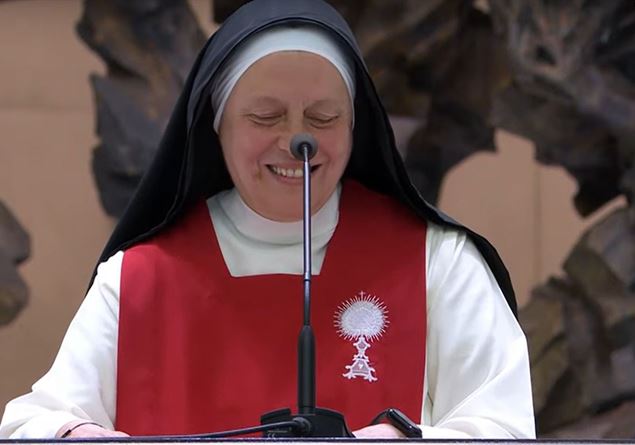Pope Leone listens to the meditation of Sister Maria Gloria Riva before taking the cross of the Jubilee and heading, with the procession that follows him, towards the Basilica of San Pietro where Mass will be celebrated. Assorted in silence he too reflects on what the woman says. The value of the small states “who keep hope alive” in a world that is losing its historical roots “these small states that keep” the thread of hope “. Sister Maria Gloria Riva repeats it several times, of the order of perpetual worshiper. It is to her, chosen by Pope Francis and confirmed by Pope Leone, who is entrusted with the meditation for the Jubilee of the Vatican State and the whole Curia. The nun stresses the common education to the rule of Sant’Agostino before starting to explain the parable of the prodigal son through the painting of De Chierico called, in fact, the return of the prodigal son. Lively with the interventionists of the First World War, Giorgio De Chirico, when, “in 1917 he was hospitalized in Ferrara, including no war he was able to offer future and hope. He therefore painted, in 1922, himself like his prodigal son, the self-made man, the son-manichino with wide shoulders, with developed quadriceps and with narrow ankles “who lives” the disorientation of a father who, painted like a Greek statue, leaves his pedestal to meet him “. Because “the past comes to meet us with his questions, not to make us succumb but to relaunch us in the present, looking to the future with hope”. He speaks of the dangers of progress that must not let us give up the roots, a race that must not be disoriented because “as the great bishop of Hippona wrote:” You don’t run how you have to ignore where you have to run “” And Christians, like John and Pietro towards the empty sepulcher of Christ, know where to run. And “it is the only race that the Church and the world can travel without fear: it is the race of those who know that hope lies in true life, the eternal one. Eternity is facing us, it is faced with those who believe and those who do not believe, is facing humanity. If we work for short and mediocre horizons, we work in vain. It is necessary to work for the great horizon of life that does not die: living by wondering in every moment if what is being done connects to us firmly to that truth that is charity and is eternity: this is to hope. Hoping is to affirm the truth that respects life, from its conception to its end; which respects the dignity of each person, beyond its kind, of his creed or his nationality; which respects particular customs and cultures of every people, great universal wealth». He asks to look at the Eucharist because it is from there that he draws force to “lead humanity and the Church, as Sant’Agostino would say, between the persecutions of the world and the divine consolations”. And he still cites Fëdor Michajlovič Dostoevsky and his question about what beauty will save the world. “What beauty will save us? Will the beauty of the cross save the world? The beauty of defeat? The beauty of humiliation? Yes, the cross can still save us, a cross offered, suffered and welcomed. It is the great losing beauty that will save us. Hope rises where the tears of pain and repentance fertilize the soul in humility and in the novelty of life that we need so much ». . Finally the last image, the Madonna painted by Salvador Dalì after the exhibition of the atomic bomb. «A Madonna who has the face of his wife Gala, which is why for the artist of great consolation. In the painting there are signs of ruin everywhere: the arch under which the Madonna is ancient but totally broken; So sometimes our institutions are ancient, but bring the sign of the deterioration of time ». Signs of ruin everywhere, but also signs of hope. “Like the egg in the middle of the arch, angels with their hands tense.” The artist, “in that short moment of approach to faith, wanted to say that Mary holds us in our failures and holds our potential as she holds her child on his knees. The merciful bowels of Mary and the divine infant are represented by open boxes such as the doors of the Jubilee. And in these doors we find the signs of hope ».


